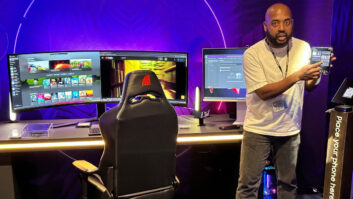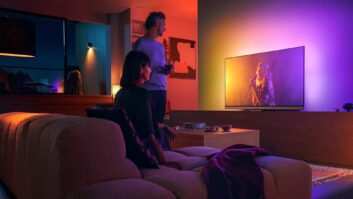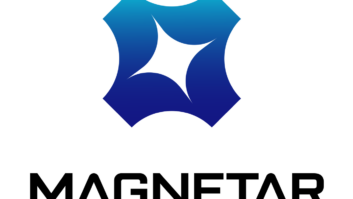Eindhoven, The Netherlands-Although it isn’t expected to market the product anytime soon, Philips recently gave reporters touring its research and development facilities here a glimpse of the blue-laser optical disc recording system it is developing in tandem with Sony.
The system, which Philips calls Blue Disc and Sony has called DVR Blue, will use blue lasers instead of today’s red lasers for super high-density optical disc recording. The added capacity will, among other things, enable the recording of feature-length movies in high-definition TV formats, which require up to 20GB.
The blue laser pickup used by Philips in its prototype HD disc recorder is currently produced by Nichia of Japan, and executives said it is still very expensive to produce. The Blue Disc system will employ a new 5-inch optical disc with up to 22.5GB capacity per side. Today’s DVD video discs hold 4.7GB per side.
A shorter-wavelength laser of 405nm, compared to 650nm for DVD, is required, as is a larger aperture of 0.85, compared to 0.60 for DVD, and a 0.1mm cover-layer substrate compared to 0.6mm for DVD.
The system was the same as that recently shown by Sony and Pioneer at the CEATEC Show in Japan, although Philips executives said they have had no formal collaboration with Pioneer in the development process. Sony and Philips have been collaborating on Blue Disc since 1997.
Although Sony appears to be focused on using blue laser DVR as its next commercially produced recordable disc format, Philips continues to prepare for the release of its DVD+RW recordable DVD technology. Executives indicated that their desire to develop a market for DVD+RW would play a part in the timing of its first Philips Blue Disc recorders, adding that they don’t want to confuse consumers by discussing multiple platforms while the pricing for Blue Disc components remain well out of reach.
Philips executives reiterated that the market launch for DVD+RW has been pushed back from late 2000 to September 2001, as the company refines products to attract a broader audience. Philips plans to offer three initial models. Although pricing was not discussed, executives said it would be “competitive” with other recorders in the market.
Introduction plans are to market two decks with IEEE-1394 interface for DV-format signals only, with the higher-end unit adding Philips’ Pronto touch-screen remote. The third unit, without the DV input, will ship in 2002.
Chris Buma, Philips A/V disc-recording program manager, said the company continues to explore adding a digital interface for home networking capability including the HAVi protocol, but unresolved copy-protection issues continue to hamper plans for more robust IEEE-1394-enabled components.
Philips-which at one point issued $3,000 as a price area for its first DVD+RW deck-plans to quickly bring about production efficiencies to enable price points that will appeal to a broader audience. The company showed the internal assembly of Philips DVD+RW recorder side-by-side with DVD-RAM and DVD-RW recorders to illustrate the consolidation of chips and parts already available.
Currently, Philips is developing DVD+RW optical pickups at the Eindhoven facility, but plans are to move that in December to a factory in Hasselt, Belgium for higher volumes.
Philips said the same drives will be used in both decks and PC drives.













